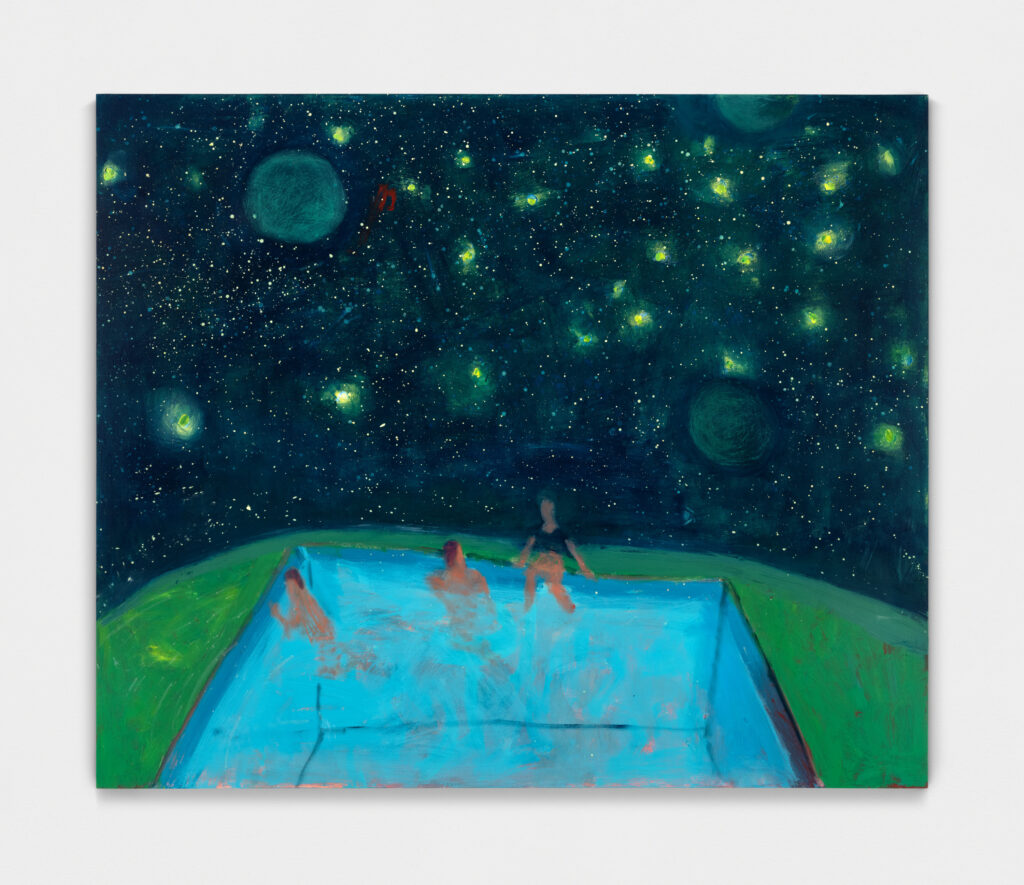| Defining herself as a “mark maker”, Bradford’s works do not start from a preconceived idea, but from a paint-inspired imagery. Few economic brush strokes, sketched into the liquid fields of color, become the limbs, torsos and faces of androgynous characters. With a radiant and luminous palette, insouciant to naturalistic strictures, their bodies are defined by color, which acts as an equalizer and eludes categories such as gender or race. Rather than depicting the subjective corporeality of individualized subjects, the figures are allowed to loosen their outlines, while the bold chromatic spectrum harmonizes the pictorial and literal relationship they have with each other. This is also evident in the groups of people gathered together forming intricate (and very human) interconnections, their physical and emotional proximity emphasized by luminous halos outlining their silhouettes. In these assemblies of vertical and horizontal blocks, the angular and sometimes awkward body poses constitute a sort of visual and metaphorical scaffold. It conveys the idea of togetherness and mutual support, identifying the single subject as part of a social group that takes care of its members. Bradford’s own personal experience transpires strongly in these works, emphasizing her decade-long commitment to the artists communities in New York and Maine, and her belief in the interconnectedness of humankind.
Three large canvases presented in the show further investigate the theme of people interacting with water, a leitmotif in Bradford’s practice. The dark blue aquatic expanses are devoid of color planes to evoke shores, horizons or skies while the bodies – barely individualized by subtle chromatic variations denoting their skin tones – seem to melt with the surrounding water. By dissolving the figurative forms into the liquid paint that constitutes them, the artist is getting closer and closer to one of her keenest phenomenological interests, which she described as the aspiration “to get the human body to be enfolded in the paint, and therefore in the water”. Here, pictorial and narrative verbalization is eluded in favor of the fluidity of poetry, and the merging of medium and subject – signifier and signified – allow universalistic readings of Bradford’s depictions of humankind. |

